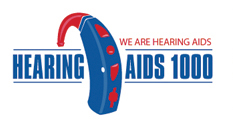People wearing hearing aids who take the subway, or go to baseball games, art exhibits, concerts, and other events at public places now look for a blue sign with a human ear in the middle and a “T” in the bottom right corner.
The blue sign indicates that a hearing loop system is installed in that place. Written underneath the sign are instructions to “Switch hearing aid to T-coil.” The hearing loop technology and digital hearing aids with telecoils are improving the lives of people with hearing problems.
The movement to install hearing loop systems has been gaining momentum recently in the United States. The technology has been widely used for quite some time in Northern Europe.
David Myers, a member of the Hearing Loss Association of America (HLAA), has been instrumental in having hearing loops installed in public places in the U.S. Myers, a psychology professor at Hope College in Holland, Michigan, said in the news media recently that his campaign has resulted in having hearing loops installed in an airport in Grand Rapids, Michigan, the basketball arena at Michigan State University in East Lansing, Michigan, and other public places in that state. Myers reportedly said he first experienced the impact of hearing loops several years ago when attending an abbey in Scotland where he clearly heard every word of the service. In addition to the HLAA, the American Academy of Audiology has also joined the U.S. campaign to install hearing loops.
A hearing loop is a thin strand of copper wire installed around the perimeter of an area. The copper wire transmits sound directly to a receiver that is built into a hearing aid or cochlear implant. The receiver is called a telecoil, or T-coil for short, which functions as a personalized wireless loudspeaker for people wearing hearing aids. The feedback or background noise that prevents an individual to hear clearly is reduced or either eliminated.
According to the HLAA, hearing loops can also be installed in homes, with costs ranging from $140 to $300 for do-it-yourself installation. It costs several thousand dollars for the system to be professionally installed in larger public venues.
The New York Times reported in October 2011 that hearing loops have now been installed at major venues in New York City, including the Metropolitan Museum of Art, the ticket windows at Yankee Stadium and Citi Field, and the American Museum of Natural History.




